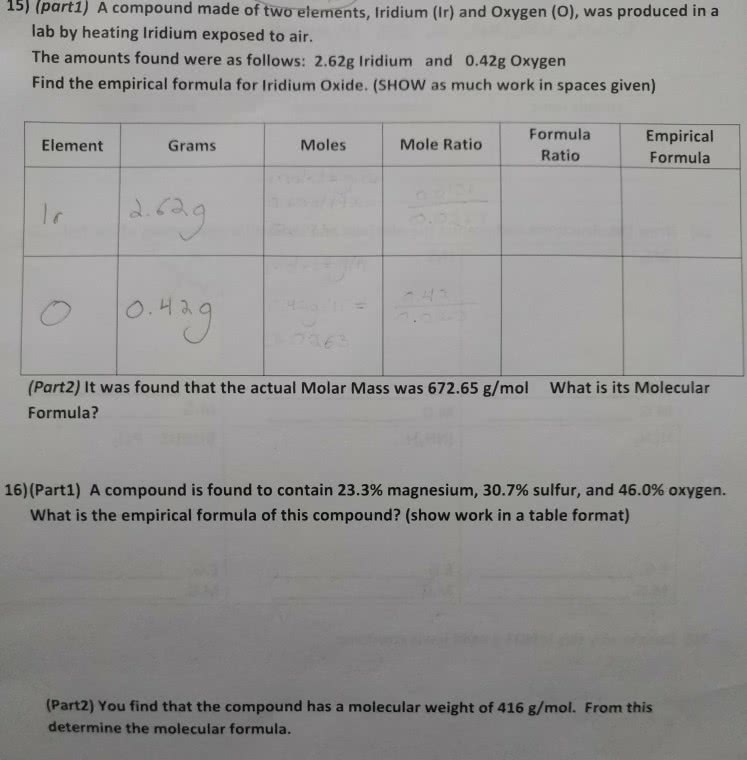01:160:161 Chapter Notes - Chapter 4.11-4.12: Molar Mass, Combustion Analysis, Chemical Formula
Document Summary
The empirical formula represents a ratio of atoms or a ratio of moles of atoms, not a ratio of masses. For the compound: we divide all the subscripts by the smallest one, once both elements have a whole number subscript, that is our empirical formula. We can determine the molecular formula of a compound from the empirical formula if we also know the molar mass of the compound molecular formula= empirical formula x n, where n= 1,2,3 . You divide the molar mass of the compound by the empirical formula molar mass in order to get n, and then multiply n by the empirical formula to get your molecular formula. In combustion analysis, the unknown compound undergoes combustion (or burning) in the presence of pure oxygen. When the sample is burned, all of the carbon in the sample is converted to co2, and all the hydrogen is converted to h2o. Combustion is a type of chemical reaction.


